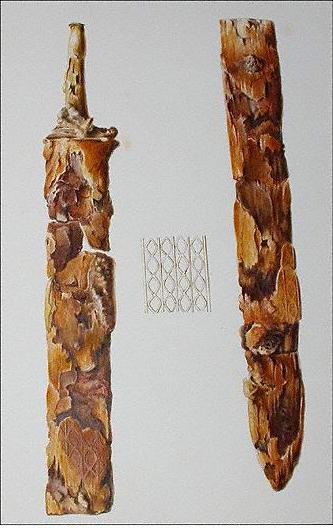This is the scabbard that I've just finished working on. It's for Paul Mortimer's new Sutton HooMound 1 sword and was a bit of a challenge. As it's for such a fine weapon (which Paul will, no doubt, show off once it's complete), I decided to eschew my normal construction method of chiselling the wooden core down from solid pieces in favour of the method employed for early medieval scabbards, which was to form two thin lathes (usually between 2mm-3mm thick)of green wood around the blade.
I was lucky enough to get hold of some 2mm thick poplar from a veneer cutter in Cornwall to make the core and some beaver fur to line it with, as this is what the site report indicated had been used.
Unusally, the find report also showed that the hairs on the fur were layed perpendicular to the length of the scabbard, not parallel to it, so that's what I've done. This doesn't seem to increase or decrease the friction of the blade in the scabbard.
As the SH scabbard had no remaining decoration, Paul chose the twin serpent design from the Valsgarde 6 scabbard. I made leather risers for this and the other raised work and then covered the whole thing in 1.5mm veg tan, worked the leather over the design and left it to dry.
The colour comes from kermes, wood ash and water which I've then sealed with a wax/oil mix to make it water resistant.
There's also a bone insert in the throat to make it easier for the old boy to put his sword away.
Obviously this is just the bare beast and my work will fade into the background once all of the fine gold and garnet adornments are applied, but I think it's the closest I've come to making a truly authentic scabbard in terms of techniques and materials and, overall, I'm pleased with the final result.


